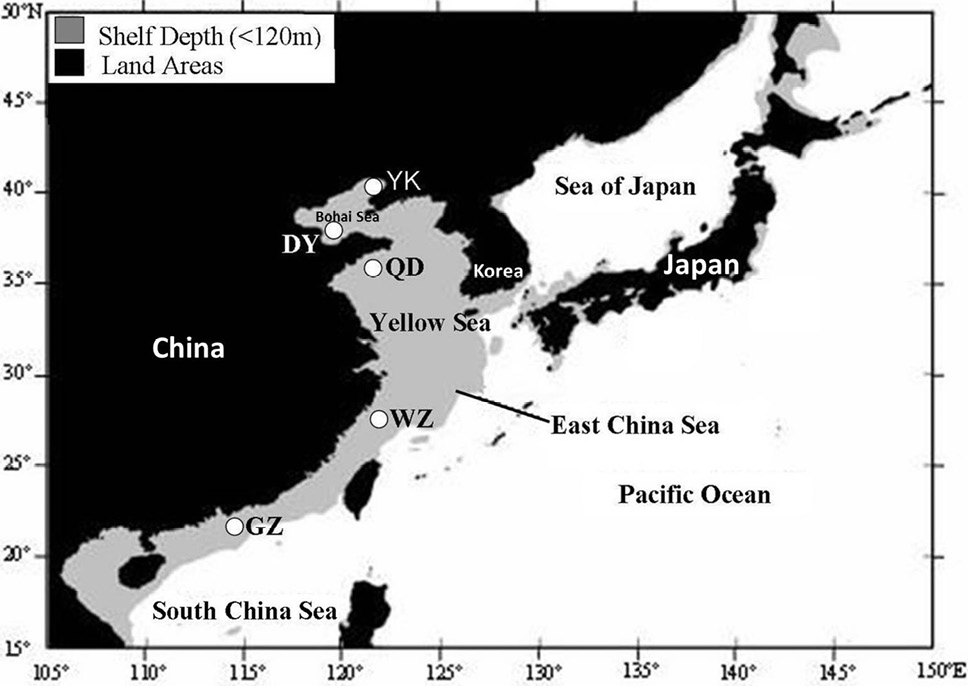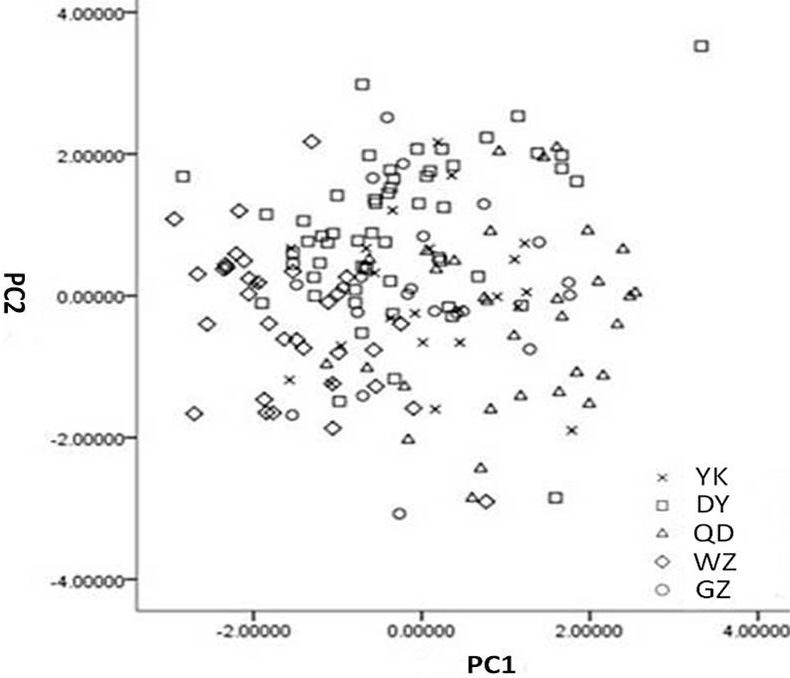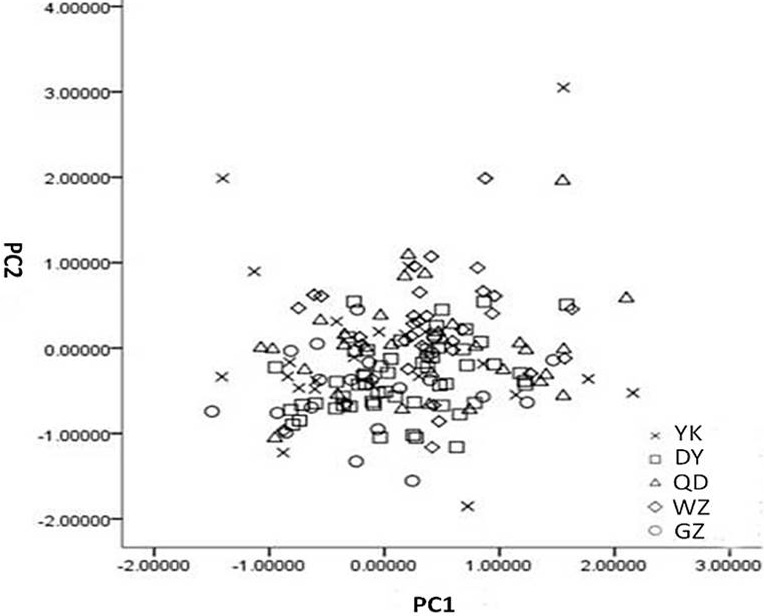The Use of Otolith Shape to Identify Stocks of Redlip Mullet, Liza haematocheilus
The Use of Otolith Shape to Identify Stocks of Redlip Mullet, Liza haematocheilus
Tao He1,2,3, Cheng-jing Chen4, Jian-guang Qin3, Yun Li1,2, Rong-hua Wu1,2 and Tian-xiang Gao4,*
Sampling locationsof five L. haematocheilus: Ying Kou (YK), Dong Ying (DY), Qing Dao (QD), Wen Zhou (WZ) and Guang Zhou (GZ).
Morphometric measurements of L. haematocheilus otolith O: core; OE: minimum radius; OA: maximum radius; LM: Feret width; JK: Feret length; GH: smallest Feret length; GI: longest Feret length. Bar = 1 mm.
Plots of the first two principal components (PC1 and PC2) of the shape indices in five L. haematocheilus stocks.
Scatter plots of the first and second PC of L. haematocheilus sagittae based on Fourier analysis.













